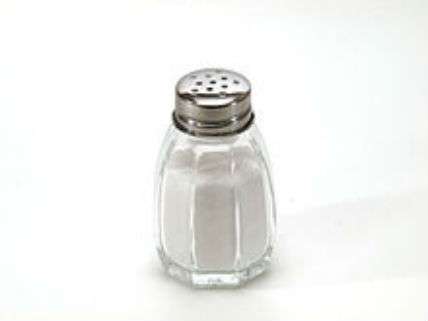FDA Salt Guidance Could Kill More People Than It Saves
Treat people as individuals not just as members of an undifferentiated public health herd

The Food and Drug Administration issued proposed guidance in June to the food industry aiming to reduce the amount of sodium in many prepared foods. In its draft guidance, the agency stated:
Average sodium intake in the U.S. is approximately 3,400 mg/day. The draft short-term (two-year) and long-term (10-year) voluntary targets for industry are intended to help the American public gradually reduce sodium intake to 2,300 milligrams (mg) per day, a level recommended by leading experts and the overwhelming body of scientific evidence. The targets are also intended to complement many existing efforts by food manufacturers, restaurants, and food service operations to reduce sodium in foods.
The FDA further asserted:
CDC has compiled a number of key studies, which continue to support the benefits of sodium reduction in lowering blood pressure. In some of these studies, researchers have estimated lowering U.S. sodium intake by about 40 percent over the next decade could save 500,000 lives and nearly $100 billion in healthcare costs.
So, the science of salt is settled, right? Actually, no. The FDA asked for public comments on its draft guidelines and it evidently received sufficient pushback that it extended the deadline for comments until December 2, 2016. As I reported earlier more and more studies are calling into question that idea that reducing salt consumption at the population level will actually result in net health benefits. For example, the New England Journal of Medicine published a study in August 2014 finding that people who consume less 1,500 milligrams of sodium (about 3/4ths of a teaspoon of salt) are more likely to die than people who eat between 3,000 to 6,000 milligrams of sodium per day (1.5 and 3 teaspoons of salt).
The free-market think tank, the Competitive Enterprise Institute has submitted comments that show that the FDA's confident claim that reducing salt consumption by Americans will save lives is at best, a hope, and at worst, tragically wrong. The CEI comments to the FDA nicely summarizes the relevant scientific studies. Here is the nub of the issue:
Reduced sodium consumption affects different individuals in different ways. Only an estimated 17 to 25 percent of the population is "salt sensitive"—they experience higher blood pressure with increased dietary sodium—while 75 percent are considered salt resistant and will experience no change in blood pressure with altered dietary sodium. However, an estimated 11 to 16 percent of the population are inverse salt sensitive, which means reduced dietary sodium can increase their blood pressure. With this heterogeneity in response to salt, trying to force a population-wide reduction in sodium availability in order to reduce incidences of hypertension would be ineffective at best and counterproductive at worst.
Among other evidence, CEI cites a 2014 metanalysis in the American Journal of Hypertension of more than two dozen sodium studies which concluded that risk of death appeared to be lowest among individuals consuming between 2,565mg and 4,796 mg of sodium a day with higher rates of death in the upper and lower range. The FDA itself notes that average daily consumption - 3,400 mg - is right in the middle of that range.
CEI correctly argues:
For a minority of the population, reducing dietary sodium can be an effective means of lowering cardiovascular and hypertension risk. But identifying for whom sodium restriction may be beneficial and by how much is something that individuals and their doctors must determine. For the general population, sodium reduction is, by no means, a silver bullet to reducing hypertension and has the potential to increase risks for a large portion of the population.
Treat people as individuals not just as members of an undifferentiated public health herd. Let's hope that the FDA will heed this advice and withdraw its misguided draft guidance.


Show Comments (67)